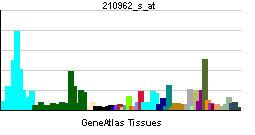Entrez 10142 | Ensembl ENSG00000127914 | |
 | ||
Aliases AKAP9, AKAP-9, AKAP350, AKAP450, CG-NAP, HYPERION, LQT11, MU-RMS-40.16A, PPP1R45, PRKA9, YOTIAO, A-kinase anchoring protein 9 External IDs HomoloGene: 17517 GeneCards: AKAP9 | ||
A-kinase anchor protein 9 is a protein that in humans is encoded by the AKAP9 gene.
Contents
Function
The A-kinase anchor proteins (AKAPs) are a group of structurally diverse proteins which have the common function of binding to the regulatory subunit of protein kinase A (PKA) and confining the holoenzyme to discrete locations within the cell. This gene encodes a member of the AKAP family. Alternate splicing of this gene results in many isoforms that localize to the centrosome and the Golgi apparatus, and interact with numerous signaling proteins from multiple signal transduction pathways. These signaling proteins include type II protein kinase A, serine/threonine kinase protein kinase N, protein phosphatase 1, protein phosphatase 2a, protein kinase C-epsilon and phosphodiesterase 4D3.
Model organisms
Model organisms have been used in the study of AKAP9 function. A conditional knockout mouse line, called Akap9tm1a(KOMP)Wtsi was generated as part of the International Knockout Mouse Consortium program — a high-throughput mutagenesis project to generate and distribute animal models of disease to interested scientists.
Male and female animals underwent a standardized phenotypic screen to determine the effects of deletion. Twenty six tests were carried out on mutant mice and eight significant abnormalities were observed. Fewer than expected homozygous mutant mice survived until weaning. The remaining tests were carried out on both homozygous and heterozygous mutant adult mice. Animals of both sex displayed decreased body fat and body weight, hematopoietic abnormalities and an atypical plasma chemistry panel. Female homozygotes also displayed abnormal tooth morphology while males heterozygous animals displayed an abnormal pelvic girdle bone morphology.
Interactions
AKAP9 has been shown to interact with:
